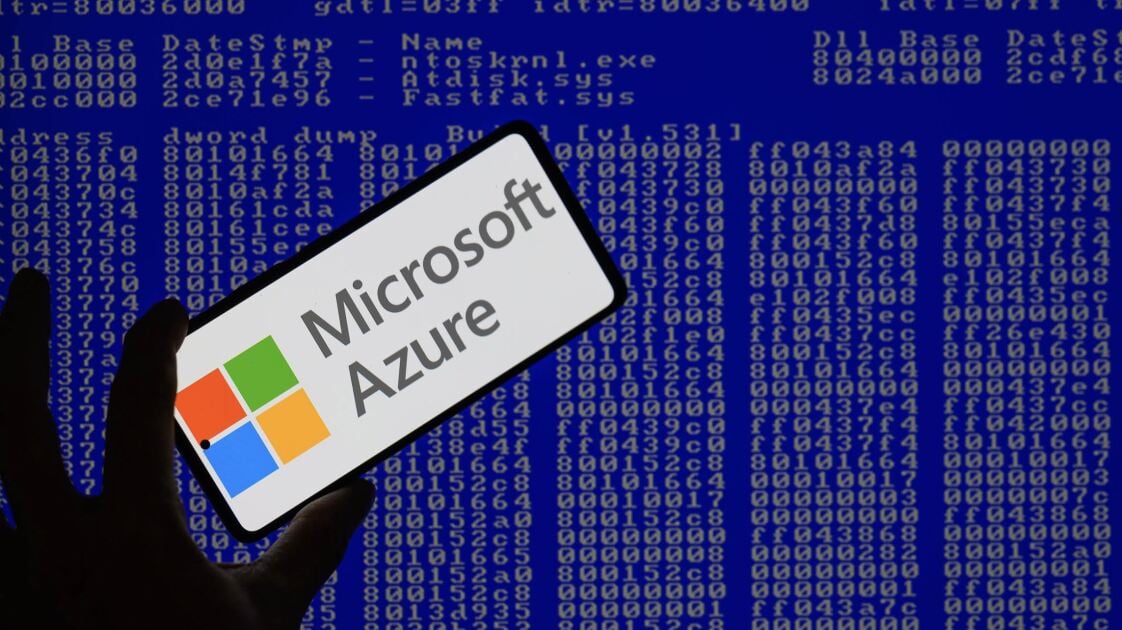In a chilling demonstration of escalating digital warfare, a shadowy force known as the Aisuru botnet unleashed an unprecedented 15.7 terabits per second (Tbps) Distributed Denial of Service (DDoS) attack against a customer operating on Microsoft’s robust Azure cloud computing service. The audacious assault, which unfolded on October 24th, sent shockwaves through the cybersecurity community, shattering previous records and serving as a stark reminder of the ever-present and evolving threats lurking in the digital ether.
The Anatomy of a Cyber Tsunami: Understanding DDoS
To comprehend the magnitude of what transpired, one must first grasp the mechanics of a DDoS attack. Imagine a colossal wave of unwanted traffic, meticulously orchestrated to overwhelm a target’s servers, rendering its online services inaccessible to legitimate users. This is the essence of a DDoS. Unlike a single-source attack, a ‘distributed’ denial-of-service attack leverages a vast network of compromised devices – known as a botnet – to launch the barrage simultaneously from countless origins.
Varieties of Digital Assault
- Volumetric Attacks: These are the brute-force method, like the Aisuru incident. They flood the target with an overwhelming volume of traffic, saturating bandwidth and bringing services to a halt.
- Protocol Attacks: These exploit weaknesses in the network’s protocol stack, consuming server resources and disrupting communication.
- Application Layer Attacks: More sophisticated, these target specific applications, mimicking legitimate user behavior to consume application resources and crash the service.
“A 15.7 Tbps attack isn’t just a nuisance; it’s a digital siege capable of bringing down entire national infrastructures if not expertly mitigated. This scale of aggression speaks volumes about the sophistication and resources behind the Aisuru botnet.”
The Aisuru Botnet: A New Titan Emerges
While the name ‘Aisuru’ might be unfamiliar to many, its actions on October 24th etched it into the annals of cyber infamy. The sheer computational and network power required to generate 15.7 Tbps of malicious traffic is staggering. It suggests a highly organized, well-funded, and technically advanced entity capable of controlling hundreds of thousands, if not millions, of compromised devices – ranging from insecure IoT gadgets to hijacked servers and workstations – across the globe. This ‘army’ of bots can be rapidly mobilized, pointed at a target, and unleash a torrent of data that few, if any, standalone defenses can withstand.
The origins of such botnets are often shrouded in mystery. They can be operated by state-sponsored actors seeking to destabilize rivals, cybercriminals engaged in extortion, or even hacktivist groups with ideological motives. The ability to launch an attack of this magnitude implies either a long-term, stealthy accumulation of compromised machines or the exploitation of a novel, widespread vulnerability that allowed for rapid expansion of their digital legions.
Azure Under Fire: A Test of Cloud Resilience
Microsoft Azure, one of the world’s leading cloud computing platforms, is designed with multiple layers of defense and boasts incredible scale and redundancy. Yet, even such a formidable fortress can be tested. The fact that an attack of this magnitude could be directed at an Azure customer underscores a critical truth: no entity, regardless of its size or security posture, is immune to the relentless barrage of cyber threats. For the targeted customer, the impact would have been immediate and severe: service outages, reputational damage, and potentially significant financial losses, even if only for a brief period.
Microsoft’s rapid mitigation of the attack, preventing widespread disruption, is a testament to the colossal investments and advanced security protocols employed by major cloud providers. Their ability to absorb, analyze, and deflect such a massive wave of malicious traffic involves sophisticated AI-driven threat detection systems, dynamic routing, and immense network capacity designed to filter legitimate traffic from the digital noise.
The Stakes for Cloud Computing
- Trust and Reliability: Incidents like this test the fundamental trust users place in cloud providers to keep their services running and data safe.
- Economic Impact: Service disruptions, however brief, can translate into millions of dollars in lost revenue for businesses reliant on cloud infrastructure.
- Innovation in Defense: Each attack forces cloud providers to innovate further, pushing the boundaries of what’s possible in real-time threat detection and mitigation.
The Escalating Arms Race in Cyberspace
The 15.7 Tbps Azure attack is not an isolated incident but a data point in a worrying trend. DDoS attacks are growing in scale, sophistication, and frequency. Attackers are constantly finding new ways to amplify their firepower, exploiting everything from vulnerable web servers to internet-connected cameras and smart home devices. The barrier to entry for launching such attacks has also lowered, with ‘DDoS-for-hire’ services making powerful tools accessible to a broader range of malicious actors.
This creates an ongoing arms race between attackers and defenders. Cloud providers like Microsoft are on the front lines, acting as digital bulwarks protecting countless businesses and individuals. Their efforts involve not just reactive mitigation but proactive threat intelligence, continuous vulnerability assessment, and collaborative efforts with law enforcement and other security entities to track and dismantle botnets like Aisuru.
The implications extend beyond the immediate incident. It signals a shift towards even more potent, disruptive capabilities in the hands of malicious entities. As our world becomes ever more interconnected and reliant on digital infrastructure, the ability to withstand and respond to such cyber assaults becomes paramount for national security, economic stability, and the functioning of society itself.
The Aisuru botnet’s record-breaking assault on Microsoft Azure serves as an urgent wake-up call, underscoring the imperative for perpetual vigilance, accelerated innovation in cybersecurity, and stronger global collaboration to safeguard our increasingly digitized future.


